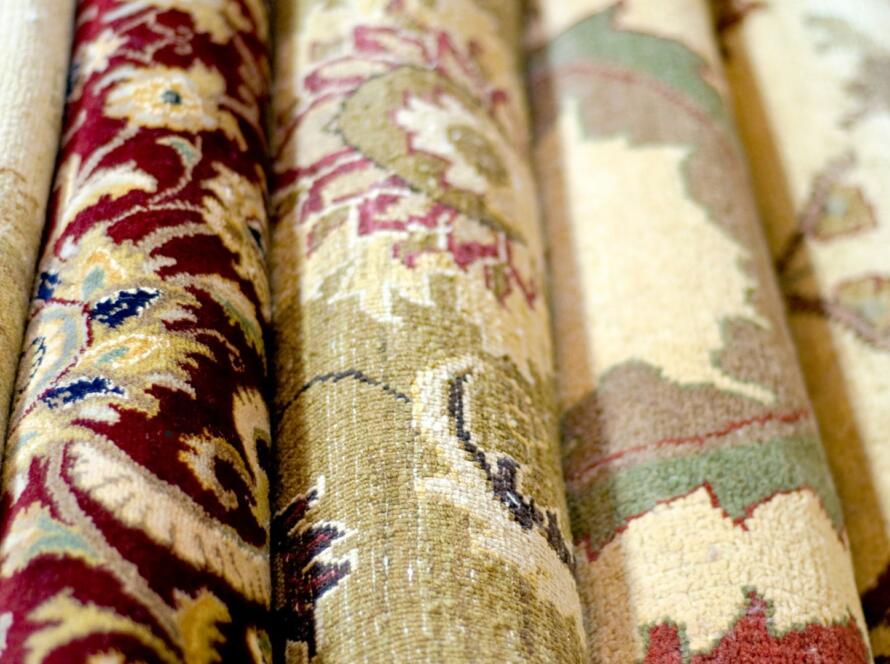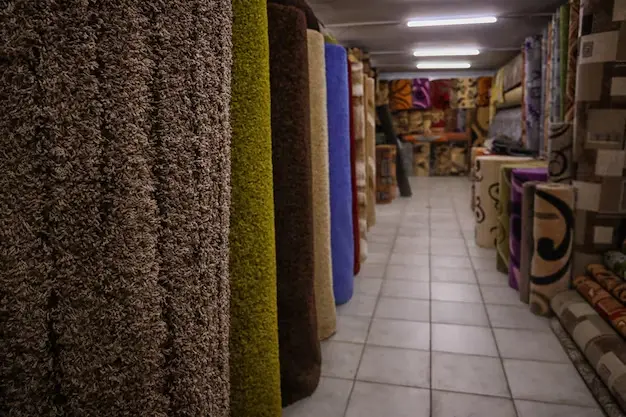
In the world of interior design, rugs play a pivotal role in transforming a space. Among the various sizes available, the 8×10 rug stands out for its versatility and ability to anchor a room. Whether you’re a homeowner looking to refresh your living space or a retailer seeking quality products, understanding the intricacies of rug manufacturing and wholesaling can guide your purchasing decisions.
The Significance of 8×10 Rugs
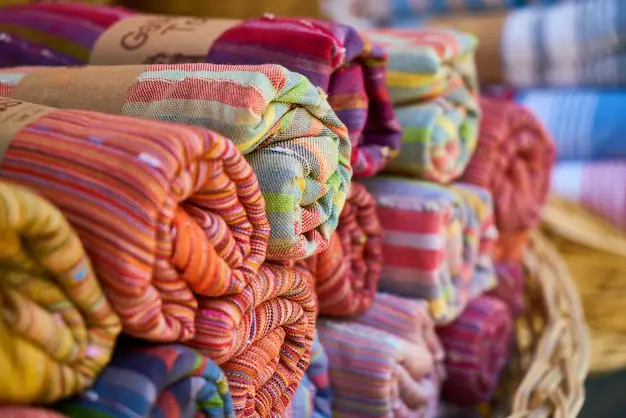
An 8×10 rug is a popular choice for several reasons. It’s large enough to define seating areas in a living room, yet versatile enough to suit dining rooms or bedrooms. These rugs are perfect for creating a cohesive look, tying together furniture pieces, and adding warmth and texture to a space.
Versatility in Design
The beauty of an 8×10 rug lies in its ability to complement various design styles. From contemporary to traditional, these rugs can be found in a wide array of patterns, colors, and materials. This versatility allows interior designers and homeowners alike to find the perfect rug that matches their aesthetic preferences and functional needs. Whether you prefer a minimalist design or a bold statement piece, an 8×10 rug can serve as the perfect canvas for your creativity.
Rugs in this size category come in materials ranging from plush wool to sleek cotton, catering to different tactile and visual preferences. Patterns vary widely, from geometric shapes that suit modern spaces to floral designs for a classic touch. This flexibility in design means that an 8×10 rug can seamlessly integrate into any room’s existing decor or serve as the foundation for a new look.
The ability to switch out rugs with changing seasons or trends without completely overhauling a room is another testament to their versatility. An 8×10 rug can adapt to evolving interior design themes, whether you’re transitioning from cozy winter textures to lighter summer aesthetics or experimenting with new color schemes.
Impact on Room Aesthetics
Rugs do more than just cover floors; they are a crucial element in interior design. A well-chosen 8×10 rug can enhance the visual appeal of a room, making it appear more inviting and well-coordinated. Whether used as a focal point or a subtle backdrop, these rugs contribute significantly to the overall ambiance of a space.
The texture and color of a rug can dramatically alter the perception of space, affecting how light interacts with the room and how colors in the room’s palette are perceived. An 8×10 rug with a vibrant pattern can draw the eye and create a dynamic visual experience, while a neutral-toned rug can provide a calming backdrop that allows other elements to shine.
Moreover, the strategic use of rugs can define distinct areas within a room, especially in open-plan spaces. An 8×10 rug can delineate a living area from a dining space, helping to organize a room’s layout without the need for walls or partitions. This not only enhances functionality but also contributes to a more cohesive and harmonious design.
Functional Benefits
Beyond aesthetics, 8×10 rugs offer practical advantages that enhance everyday living. They provide a soft surface underfoot, reducing strain when standing or walking on hard floors. This added comfort is particularly beneficial in areas where people spend significant time, such as living rooms or bedrooms.
Rugs also play a vital role in sound absorption, minimizing echoes and reducing noise levels in a room. This can create a more peaceful environment, which is especially important in busy households or urban settings. Additionally, rugs can act as insulation, helping to retain warmth during colder months and contributing to energy efficiency.
In high-traffic areas, an 8×10 rug can protect underlying flooring from wear and tear, extending its lifespan. This protective quality, combined with the rug’s aesthetic appeal, makes it a valuable addition to any home, balancing beauty with practicality.
Understanding the Rug Manufacturing Process
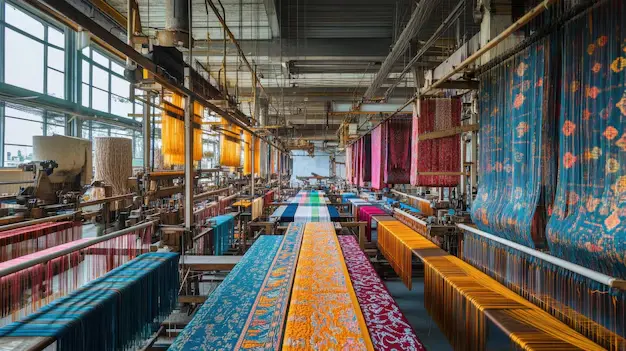
When it comes to purchasing rugs, knowing how they are made can influence your choice. The manufacturing process involves several steps, each contributing to the rug’s final quality and durability.
Material Selection
The first step in rug manufacturing is selecting the right materials. Common materials include wool, cotton, silk, and synthetic fibers. Each material offers unique benefits, such as wool’s natural stain resistance and silk’s luxurious sheen. The choice of material affects the rug’s texture, color retention, and lifespan.
Selecting the right material is crucial as it determines not only the rug’s appearance but also its performance. Wool, for instance, is prized for its durability and natural resistance to stains, making it ideal for high-traffic areas. Its ability to retain color ensures that the rug remains vibrant over time, even with regular use.
Cotton rugs are appreciated for their softness and ease of maintenance. They are lightweight and can be cleaned easily, which makes them suitable for households with children or pets. Silk, on the other hand, offers a touch of luxury with its lustrous finish, perfect for adding elegance to formal spaces.
Synthetic fibers, such as nylon or polyester, provide affordability and a wide range of design options. These materials are often treated for stain resistance and can mimic the appearance of natural fibers, offering a practical alternative for budget-conscious buyers. Understanding these material characteristics helps in choosing a rug that aligns with specific needs and preferences.
Weaving Techniques
Rug weaving is an art form that has been practiced for centuries. Various techniques, such as hand-knotting, tufting, and machine weaving, determine the rug’s construction and quality. Hand-knotted rugs are often considered the gold standard due to their intricate designs and durability, while machine-made rugs offer affordability and consistency.
Hand-knotting involves tying individual knots by hand, creating intricate patterns that are both unique and durable. This labor-intensive process results in rugs with exceptional detail and longevity, often becoming treasured family heirlooms. The time and skill required for hand-knotting are reflected in the rug’s price, but the quality and craftsmanship justify the investment.
Tufted rugs, on the other hand, are made by punching strands of yarn into a canvas that is stretched on a frame. This technique allows for a wide range of patterns and textures and is faster than hand-knotting, making it a cost-effective option for those seeking custom designs.
Machine-made rugs are produced using advanced technology that ensures uniformity and precision in design. These rugs are typically more affordable and available in a wide variety of styles, catering to diverse consumer preferences. While they may lack the artisanal touch of handmade rugs, they offer consistency and accessibility, making them a popular choice for many.
Quality Control
Quality control is a crucial aspect of rug manufacturing. Each rug undergoes rigorous inspection to ensure it meets the desired standards. This includes checking for color consistency, pattern accuracy, and any defects. Only rugs that pass these checks make it to the market, ensuring customers receive a product that meets their expectations.
The quality control process begins with a thorough examination of the materials, ensuring they meet the manufacturer’s standards for quality and sustainability. Inspectors assess the yarns for strength and colorfastness, ensuring they will withstand wear and cleaning without fading.
During production, each rug is inspected for pattern precision and structural integrity. Any deviations from the design or flaws in construction are addressed immediately to maintain the rug’s quality. Post-production, rugs undergo a final inspection where every detail is scrutinized, from edge finishes to overall symmetry.
Manufacturers committed to quality control often implement additional measures, such as independent third-party audits, to verify their adherence to industry standards. This commitment to excellence ensures that customers receive a product that not only meets but exceeds their expectations, enhancing their satisfaction and trust in the brand.
The Role of a Custom Rug Maker

For those seeking unique designs, custom rug makers offer personalized solutions. Custom rugs are tailored to specific preferences, allowing for creativity and individuality in design.
Personalized Designs
Custom rug makers work closely with clients to create designs that reflect their vision. This process involves selecting materials, colors, and patterns that align with the client’s taste. Whether it’s a specific motif or a custom color palette, the possibilities are endless with custom rugs.
The personalization process begins with a consultation to understand the client’s vision and requirements. Clients can choose from an array of materials and colors, allowing them to tailor the rug’s aesthetic to their specific needs. This collaborative approach ensures that the final product aligns perfectly with the client’s expectations, whether for a home or a commercial space.
Designers often provide sketches or digital renderings to help clients visualize the final product. This step is crucial for making adjustments and ensuring the design meets the client’s approval before production begins. The result is a one-of-a-kind rug that embodies the client’s unique style and preferences, adding a personal touch to their space.
Custom rug makers also offer the opportunity to incorporate meaningful symbols or motifs into the design. This can include family crests, logos, or other personal elements, turning the rug into a cherished keepsake or brand statement. This level of personalization makes custom rugs a preferred choice for those seeking a truly unique and meaningful addition to their decor.
Meeting Specific Needs
In addition to aesthetic preferences, custom rug makers also consider practical needs. This includes creating rugs with specific dimensions, shapes, or features like non-slip backing. Customization ensures that the rug not only looks good but also functions well in its intended space.
Clients may have specific requirements based on the room’s layout or function. Custom rug makers can adjust the rug’s size and shape to fit unusual spaces, such as a long hallway or an irregularly shaped room. This ensures that the rug fits perfectly, enhancing both the room’s functionality and aesthetic appeal.
Practical features such as non-slip backing can be added to enhance safety, especially in areas with high foot traffic or where children and pets are present. Customization can also extend to the rug’s durability, with specific treatments available to enhance stain resistance or UV protection for outdoor use.
These practical considerations are integral to the customization process, ensuring that the rug meets all of the client’s needs, from design to functionality. This holistic approach to rug making results in a product that is both beautiful and practical, offering long-term satisfaction.
Collaboration with Designers
Custom rug makers often collaborate with interior designers to create rugs that complement a room’s overall design scheme. This partnership allows for a seamless integration of the rug into the space, enhancing the room’s aesthetic and functional qualities.
Designers can provide valuable insights into color theory, texture, and pattern selection, ensuring that the rug harmonizes with other elements in the room. This collaboration results in a cohesive design that enhances the room’s overall ambiance and functionality.
Custom rug makers can also accommodate specific design requirements, such as matching existing decor or incorporating a specific theme. This flexibility allows for a truly personalized design experience, resulting in a rug that is perfectly suited to the client’s needs and the room’s design.
Choosing the Right Rug Manufacturer and Wholesaler
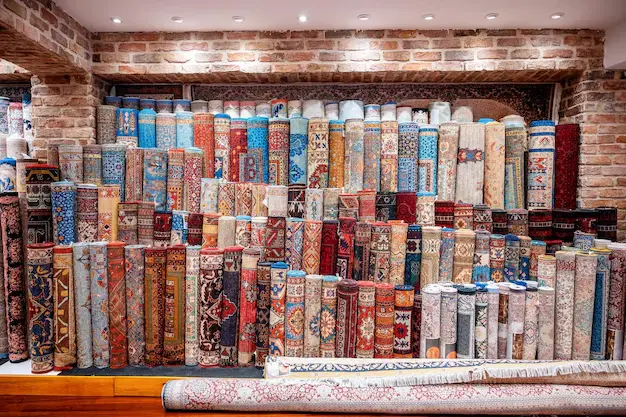
Selecting the right manufacturer and wholesaler is crucial for obtaining quality 8×10 rugs. Here are some factors to consider:
Reputation and Experience
A manufacturer’s reputation and experience can provide insight into the quality of their products. Look for companies with a track record of producing high-quality rugs and satisfied customers. Reviews and testimonials can offer valuable information about the company’s reliability and product quality.
Established manufacturers often have a wealth of experience in the industry, allowing them to refine their production processes and deliver superior products. Their longevity in the market is often a testament to their commitment to quality and customer satisfaction. Researching a company’s history and reputation can provide assurance of their reliability and the quality of their rugs.
Customer reviews and testimonials offer firsthand insights into the experiences of previous buyers. These reviews can reveal important details about product durability, customer service, and overall satisfaction. Additionally, industry certifications and awards can further validate a manufacturer’s commitment to excellence.
Networking with industry professionals and attending trade shows can also provide valuable information about reputable manufacturers. These events offer opportunities to see products firsthand, speak with company representatives, and gain insights into industry trends and innovations.
Range of Products
A diverse product range indicates a manufacturer’s ability to cater to different tastes and preferences. Whether you’re looking for traditional designs or modern patterns, a manufacturer with a wide selection can meet your needs.
A broad product range showcases a manufacturer’s versatility and ability to adapt to changing market demands. This diversity allows retailers to offer their customers a wide selection, enhancing their ability to meet varied customer preferences and increase sales potential.
Manufacturers with a comprehensive range often invest in research and development to stay ahead of design trends and introduce innovative products. This commitment to innovation ensures that customers have access to the latest styles and technologies, enhancing their overall shopping experience.
Retailers can benefit from partnering with manufacturers who offer customization options, allowing them to cater to niche markets or specific customer requests. This flexibility can set a retailer apart from competitors and attract a loyal customer base seeking unique and personalized products.
Ethical Practices
Consider manufacturers committed to ethical practices. This includes fair labor conditions, sustainable sourcing of materials, and environmentally-friendly manufacturing processes. Supporting ethical companies contributes to a more sustainable and fair industry.
Manufacturers committed to ethical practices often prioritize fair labor conditions, ensuring that workers are treated with respect and compensated fairly. These companies may also invest in community development initiatives, supporting the well-being of their workforce and local communities.
Sustainable sourcing of materials is another important aspect of ethical manufacturing. This involves selecting materials that are renewable, biodegradable, or recycled, minimizing the environmental impact of production. Manufacturers may also implement energy-efficient processes and reduce waste to further enhance their sustainability efforts.
Consumers increasingly value transparency and social responsibility, making ethical practices an important consideration when choosing a manufacturer. By supporting companies with strong ethical values, consumers can contribute to positive change in the industry and promote a more sustainable future.
The Benefits of Buying Quality Area Rugs

Investing in quality area rugs offers numerous benefits beyond aesthetics. Here’s why quality matters:
Durability and Longevity
Quality rugs are designed to withstand daily wear and tear. With proper care, they can last for many years, making them a cost-effective investment. Durable rugs maintain their appearance and structure, providing long-term value.
High-quality materials and construction methods are the foundation of a durable rug. Wool, for example, is known for its resilience and ability to bounce back from compression, maintaining its shape and texture over time. Hand-knotted rugs, with their intricate construction, are particularly durable, often lasting for generations.
Regular maintenance, such as vacuuming and professional cleaning, can further extend a rug’s lifespan, preserving its beauty and structural integrity. Investing in a quality rug reduces the need for frequent replacements, offering long-term savings and peace of mind.
Rugs with superior durability also offer better resistance to stains and fading, ensuring they remain vibrant and attractive even with regular use. This longevity enhances the rug’s value, making it a wise investment for any home or business.
Comfort and Insulation
Rugs add comfort underfoot and provide insulation, keeping rooms warm in colder months. This additional layer can also help with sound absorption, creating a quieter and more peaceful environment.
The soft texture of a quality rug offers a comfortable surface for walking and lounging, enhancing the overall comfort of a space. This is especially beneficial in areas where people gather, such as living rooms or bedrooms, creating a welcoming and cozy atmosphere.
Rugs also serve as an insulating layer, helping to retain heat and reduce energy costs during colder months. This insulation can improve the overall efficiency of a home’s heating system, contributing to energy savings and environmental sustainability.
In addition to thermal insulation, rugs provide excellent sound absorption, reducing noise levels and minimizing echoes. This is particularly advantageous in open-plan spaces or multi-story homes, where sound can travel easily. A quality rug enhances the acoustic environment, promoting a sense of tranquility and comfort.
Enhanced Aesthetics
A quality rug enhances the look of a room, elevating its overall design. With vibrant colors and intricate patterns, a well-made rug becomes a focal point, adding character and charm to any space.
The craftsmanship of a quality rug is evident in its detailed patterns and rich color palette. These elements can transform a room, adding depth and visual interest that elevates the overall design. A vibrant rug can inject energy and personality into a space, while a more subdued design can create a calming and cohesive aesthetic.
Rugs also serve as a unifying element, tying together different design components such as furniture, artwork, and accessories. This cohesion enhances the room’s overall harmony and balance, creating a more polished and sophisticated look.
By investing in a quality rug, homeowners can enjoy a versatile design element that adapts to changing styles and trends. A well-chosen rug enhances the room’s ambiance, creating a welcoming and stylish environment that reflects the homeowner’s personality and taste.
Conclusion
In the world of interior design, a rug is more than just a floor covering; it’s a statement piece that defines the character and style of a room. Understanding the manufacturing process, the role of custom rug makers, and the factors to consider when choosing a manufacturer and wholesaler can help you make informed decisions.
Whether you’re a homeowner looking to enhance your living space or a retailer seeking quality products, investing in 8×10 rugs from a reputable manufacturer ensures you’ll receive a product that combines beauty, durability, and functionality. Choose wisely, and let your rug be the centerpiece that ties your room together.




